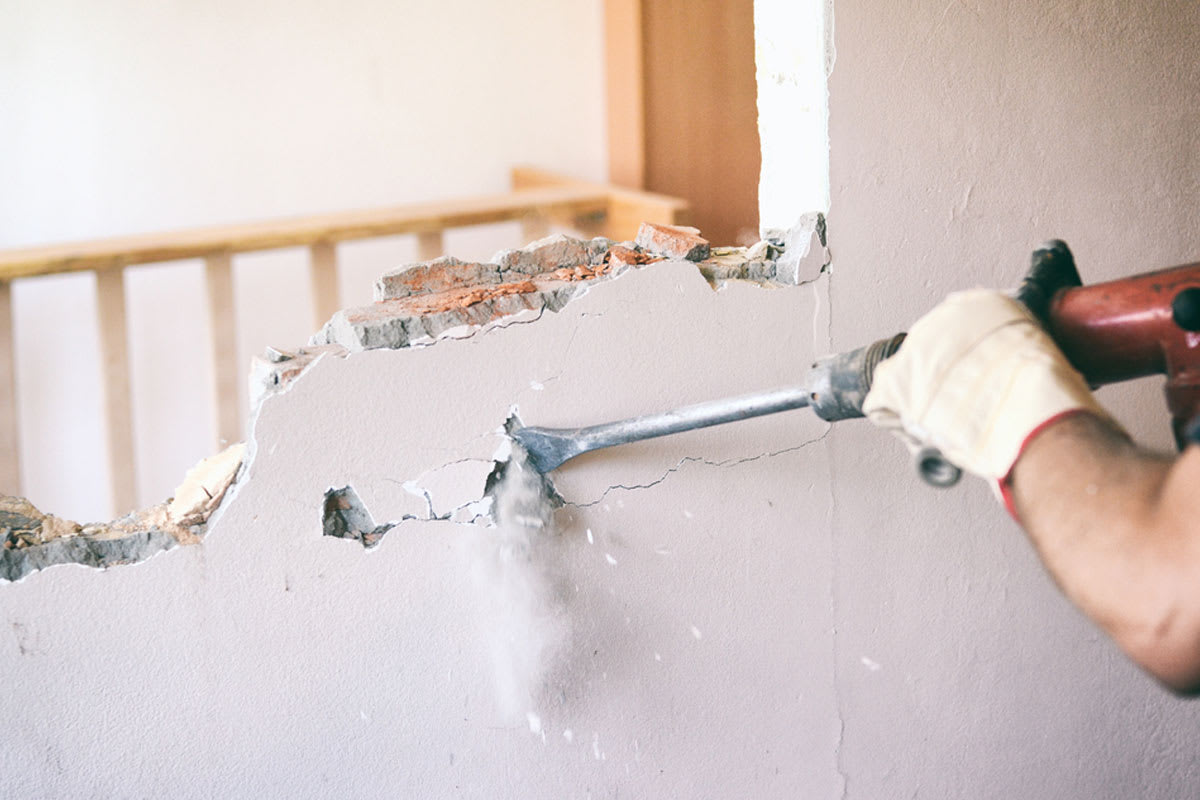Environmental Sustainability in Interior Demolition: Strategies for Liable Practices
Environmental Sustainability in Interior Demolition: Strategies for Liable Practices
Blog Article
The Ultimate Overview to Inside Demolition Techniques and Tools
Within the realm of interior remodellings, the art of demolition is a pivotal stage that requires accuracy, skill, and the right set of devices. Whether you are an experienced specialist or a Do it yourself fanatic, understanding the ins and outs of indoor demolition strategies can make all the distinction in achieving an effective task result.
Essential Interior Demolition Tools
When carrying out indoor demolition projects, having the proper devices is vital for effectiveness and safety. One of the most vital tools for interior demolition is the demolition hammer. This sturdy tool is created to damage through tough products like ceramic tile, drywall, and concrete.
Its capacity to make precise cuts in limited rooms makes it optimal for demolition job. Generally, having these essential indoor demolition devices will dramatically boost the performance and safety and security of any demolition project.

Safety Safety Measures During Demolition

Additionally, all employees included in the demolition process need to obtain appropriate training on the appropriate handling of tools and equipment to minimize accidents. By sticking to these safety and security precautions, indoor demolition projects can be lugged out efficiently while focusing on the well-being of all people entailed.
Methods for Removing Wall Surfaces
Executing proper security preventative measures during indoor demolition projects is crucial for developing a safe and secure workplace, and one key facet of such projects entails understanding techniques for eliminating wall surfaces. One generally used approach is hands-on demolition, which requires using basic hand devices such as sledgehammers, crowbars, and energy knives to very carefully take apart the wall piece by piece. This method enables greater control over the demolition process, specifically in fragile locations where precision is vital.
For bigger, extra complex wall surfaces, mechanical demolition may be required. This includes utilizing hefty equipment like bulldozers or excavators to tear down wall surfaces successfully. However, it is important to ensure that the structural integrity of the building is not jeopardized during mechanical demolition.
Another technique for removing walls review is deconstruction, where the wall is taken apart in such a way that maintains reusable materials. This sustainable method is eco-friendly and can additionally help in reducing disposal prices. Whichever technique is utilized, it is important to comply with appropriate security procedures and take into consideration the architectural ramifications of wall surface removal to make sure a successful interior demolition project.
Removing Floor Covering Like a Pro
Efficiently getting rid of floor covering throughout interior demolition requires the correct devices and techniques to make certain a smooth and effective procedure. Additionally, having a dumpster or assigned disposal area ready navigate to this website for the eliminated floor covering materials is important for preserving a clean job atmosphere. By following these methods and making use of the right devices, eliminating floor covering like a pro can be attained efficiently and successfully.
Correct Garbage Disposal Approaches
After successfully getting rid of floor covering utilizing the appropriate devices and methods, the next important step in the indoor demolition procedure is carrying out correct waste disposal methods. Proper waste disposal is crucial for preserving a risk-free and clean job environment throughout and after demolition.

Specialists have to abide by local laws regarding waste disposal to avoid charges and penalties. Using professional waste administration services can enhance the disposal procedure and make certain conformity with ecological guidelines. By implementing appropriate waste disposal techniques, indoor demolition tasks can be finished successfully and sustainably.
Verdict
In verdict, indoor demolition requires the usage of vital tools and stringent safety and security precautions to ensure a effective and safe procedure. By complying with these guidelines, interior demolition can be completed successfully and with minimal threats.
One of the most important devices for interior demolition is the demolition hammer (interior demolition). Overall, having these crucial interior demolition devices Discover More will substantially enhance the effectiveness and safety and security of any type of demolition project
Effectively removing floor covering during indoor demolition calls for the appropriate tools and methods to make sure a smooth and effective process.After successfully eliminating flooring making use of the proper devices and techniques, the next essential action in the interior demolition procedure is applying proper waste disposal approaches.In verdict, interior demolition requires the usage of vital devices and strict safety and security precautions to ensure a safe and successful process.
Report this page